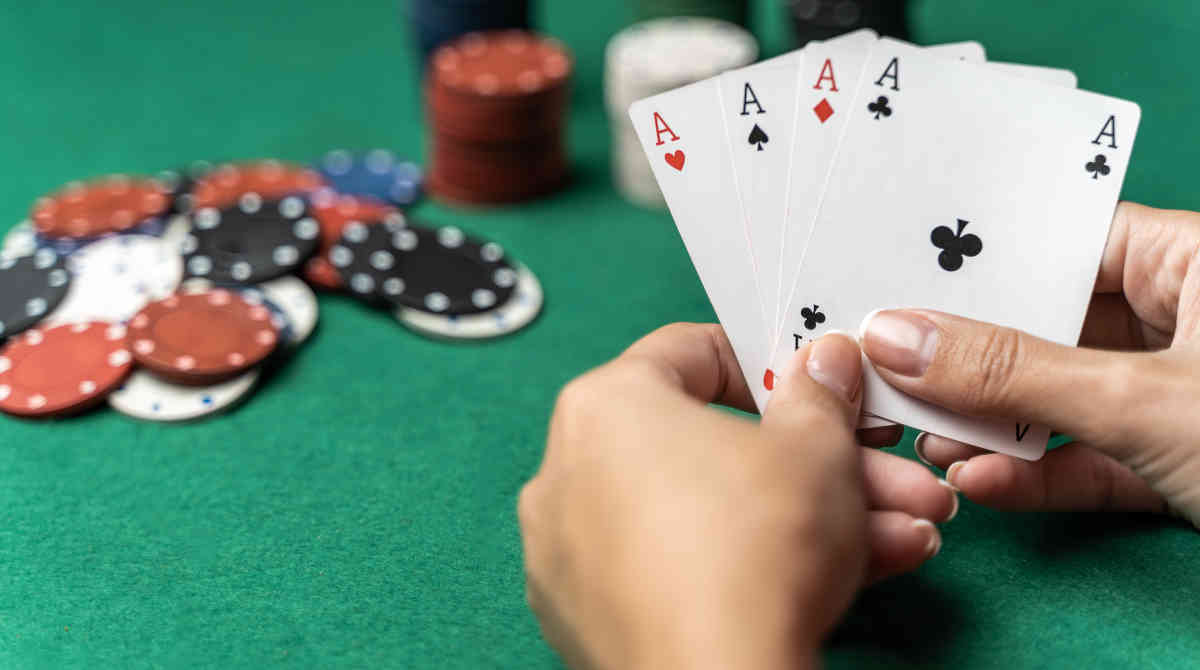Poker Combos – How to Count Poker Hand Combinations Like a Pro

9 minutes
Last Updated: August 30, 2023
Poker is a game entirely based in mathematics, and whether you prefer to play a very math-based style, or try to exploit your opponents with all sorts of reads, understanding the math of the game is essential for long-term success.
One of the key mathematical skills you will need in poker really comes down to the simplest form of math, which is counting. Counting poker combos can help in many ways, and is a skill overlooked by many novice players.
In fact, if you were to ask an average poker player some very simple questions regarding poker card combos, they would probably not be able to answer them, and this is one of the reasons they remain in the average category.
Even if you don’t understand the importance of poker combos just yet, keep reading and I will teach you what poker hand combinations are, how to count them, and how to apply this knowledge in real-game scenarios.
What Are Poker Combos?
While most poker players understand all the different poker hands they can get dealt, many don’t ever stop to think about the different ways those hands can be created and the likelihood of getting each particular hand.
For instance, the difference between paired hands, off-suit hands, and suited hands, is often not quite clear to players. They often don’t understand how much less likely suited hands are than their off-suit counterparts.
Thankfully, combinatorics can help us grasp all these numbers quite quickly. Once you learn them, you will have them in your head forever to use in poker games for the rest of your career.
Possible Poker Card Combos
A quick glance at the poker hands grid, which is made up of all the possible combinations of hole cards, will show you that there are exactly 169 different poker hands you can get dealt.
Each card can be dealt with each other card, and since there are 13 ranks of cards in a card deck, the calculation is quite simple.
However, there is a total of 1,326 poker card combos, since each card in each suit can be dealt with every other card in each suit.
Of those total poker combos, we have:
- 936 off-suit poker combos
- 312 suited poker combos
- 78 pair poker combos
A quick rule of thumb to learn once and for all is that every suited hand can only have a maximum of four different combos, each off-suit hand can have 12 combos, and each paired hand can have a total of 6 poker hand combinations.
These numbers already tell us quite a bit about the overall distribution of cards in poker. As you can see, it is three times more likely to be dealt an off-suit version of a hand than its suited counterpart, etc.
Now that I got you thinking about this, think for a second what knowing just a single card can do to the overall likelihood of certain hands being in your opponent’s hand, and you will start to grasp the importance of counting poker combos and keeping them in your mind while playing.
How Poker Combos Help Us
So now that you know what poker card combos are and how to count them, as well as how many combos of each hand are possible, you are probably wondering why exactly they matter?!
The answer is that poker combos have multiple uses in the game, and each of them can help improve your results in the long term.
For instance, some of the common uses of poker combos are:
- Deciding which hands to play from different positions
- Choosing the hands to bluff or not bluff with
- Choosing the hands to bluff catch with
- Gaining a better understanding of minimum defense frequency
- Understanding poker ranges overall
As you start thinking about poker in terms of ranges and hand combos, you will leave the old mentality of “reading” your opponent’s hand. You’ll start actually thinking about how to play against all their possible holdings.
Understanding possible poker combos will give you a chance to bluff in the right spots, find more profitable bluff catchers, and have a better grasp on what your opponents are actually trying to do with their plays.
Poker Combos and Opponents’ Ranges

The truth is that most poker players don’t think long and hard enough about the hands their opponents are likely to have, and not having a good grasp of poker combinatorics is where it all starts.
As you start playing in a poker game, you should try and gain some reads on how your opponents are playing, and figure out which players are playing too wide or too tight.
In most online cash games these days, many players will have their opponent ranges mastered to near perfection, and this is something you can use to your advantage.
When thinking about the possible hands your opponents can have, you should be thinking in terms of possible poker hand combinations that are actually a part of their range.
For instance, against a player who min-raises from UTG in an online cash game, you should start constructing a range in your head, and should understand that this range contains very few off-suit hands.
On a board of A♥7♦4♣, you will already have quite a bit of information to work with.
Assuming this is an average opponent who understands hand ranges, they should be playing to a degree, you can completely discount A7 off-suit or A4 off-suit.
This means your opponent can only have a maximum of A♣7♣, A♠7♠, A♦4♦, and A♠4♠ for two pair combos, while all other combos of these hands are out of the picture.
This means two pair is quite an unlikely holding for your opponent, and might be a more reasonable holding for you as the defender in big blind, since you would defend the off-suit combos against a min-raise as well.
This is only one very simple example of how poker combos can help you narrow down your opponents’ ranges by eliminating possible hands and then counting the number of overall poker combos they can have.
In the example above, there are countless more one pair hands, and even more hands that have completely missed the board and are just hoping to win the pot with a continuation bet.
Impact of Blockers on Poker Hand Combos

Blockers are a concept that has only been accepted by the majority of the poker community for few years, but the truth is they were always right there, under our very noses.
A blocker is any card that you are aware that makes certain poker combos impossible. For instance, if you are holding the A♥ in your hand, your opponent can’t possibly have the nut-flush on a three-heart board.
This particular blocker trick is often used by players in PLO to make big river bluffs, but blockers have plenty of purpose in Texas Hold’em as well.
A good example of how blockers are used by Hold’em pros these days is before the flop, when hands like A5s and A2s are used as preferred 4-betting candidates over other hands.
While one part of it is the fact those small suited aces can make a straight, the other is the fact that holding an Ace in your hand significantly decreases the likelihood of your opponent holding pocket aces.
When facing a 3-bet, pocket Aces is certainly a hand that immediately pops to mind. But, since you hold an Ace yourself, the number of AA combos goes down from six to just three, making it 50% less likely they actually have Aces.
What’s even more, this single blocker also decreases the likelihood of your opponent holding a suited AK or AQ by 25% each, which means you will often be putting them in a tough spot with your 4-bet.
Another time when blockers can come into play has to do with your own river decisions, where a single card can make all the difference.
In a very recent hand played on a live streamed cash game, popular poker pro Mariano decided to go all-in with his AA against Dan “Jungleman” Cates simply because he was holding the A♥.
With the board having three hearts on it, Mariano believed it is not very likely Jungleman has a flush on the river, and that he was more likely to have a top-pair type hand that could pay him off.
Mariano was wrong in this particular situation, and ended up losing a big pot, but only made the bet because he was the one holding the nut card in this situation.
We have seen many examples of hands like this in high stakes poker in recent months, and the pros using these subtle tricks and thinking about blockers and card combos have been coming out on top quite a bit.
Counting Poker Combos In-Play
I would say that one of the biggest mistakes poker players make when playing is that they don’t take enough time to make their decisions, or that they waste their time thinking about irrelevant things.
If you want to spend two minutes staring down your opponent on the river, trying to get a “soul read” from them, then be my guest, but I promise you a more methodical approach will work better.
Instead of trying to look beyond the shades or look for subtle changes in players’ breathing patterns, take some time to think about poker card combos that your opponents can have, count them, compare them to the board, and come to logical conclusions.
Is your opponent very likely to be bluffing, or are there many card combos in their range that actually make a strong hand on this board? These are the questions you should be asking yourself.
The next time you play poker, remember to think about the combinatorics of the game, and at least keep the 4-6-12 rule in your head as the number of suited-paired-off-suit poker card combinations your opponent could possibly have.




















